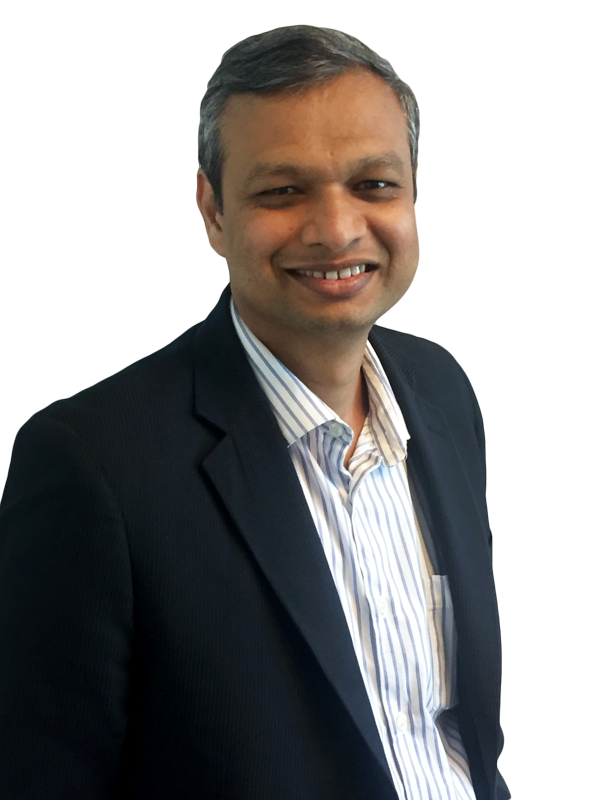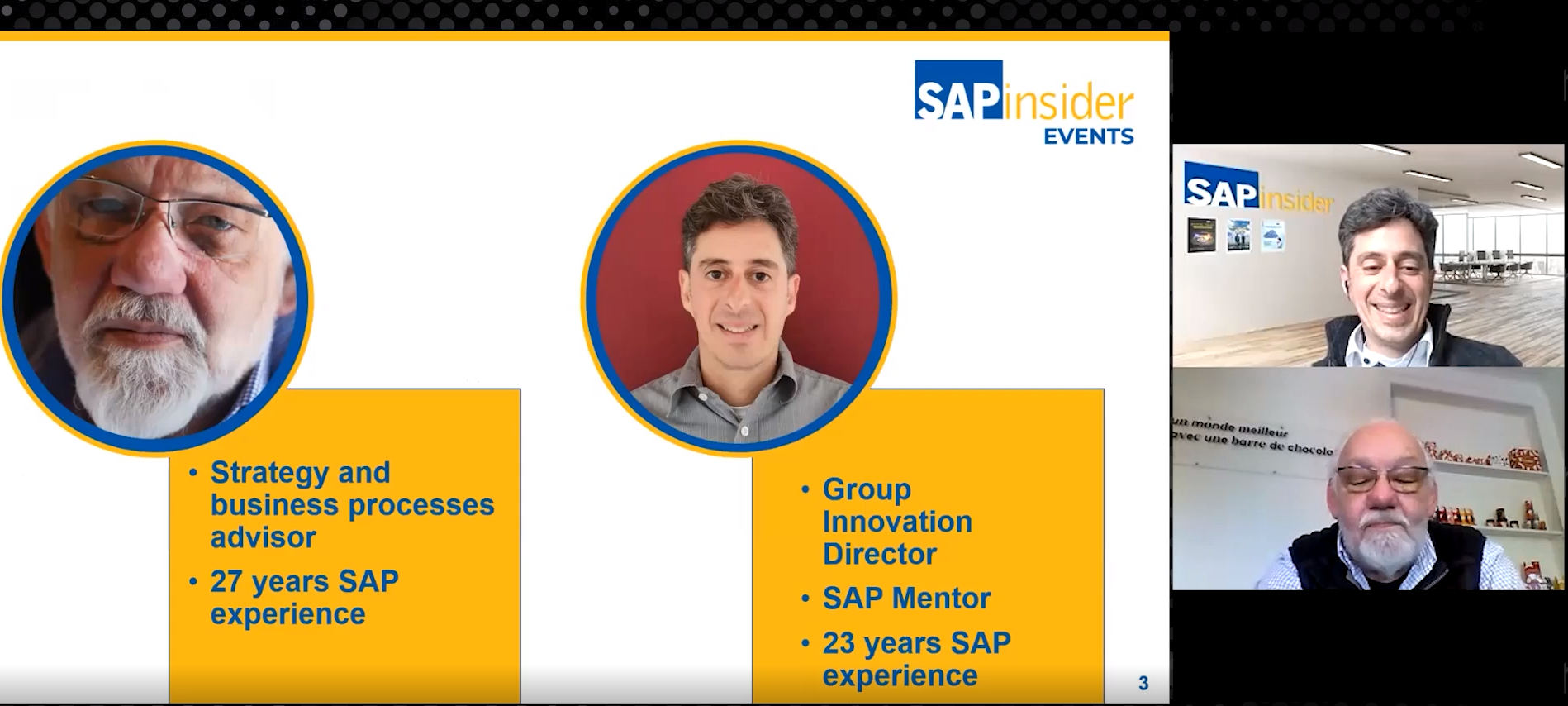Transformation with SAP S/4HANA Means Evolving and Learning
By Alex Soto, Editor, SAPinsider
Virtually every business across industry verticals — banking and finance, manufacturing, retail, consumer packaged goods, logistics, energy resources, utilities, and life sciences — needs to undergo digital transformation.
But not every business senses how changes in digital technology, such as cloud and artificial intelligence (AI), the evolution of consumerism, and disruptions caused by the pandemic, are creating make-or-break opportunities in the global business climate.
Explore related questions
Take for example businesses across the U.S. that permanently shut down their doors due to the uncertainty and disruption caused by the COVID-19 pandemic. According to a recent Federal Reserve Board study, there were roughly 200,000 more business closures in the first year of the pandemic than in previous years, pre-pandemic.
Businesses that pivoted to online models within weeks of the pandemic shutdowns to provide their products and services demonstrated the resilience and agility to remain afloat, and some even thrived, according to Ramesh J. Chougule, AVP, SAP Cloud and Digital Lead at Infosys.
Companies that did not invest early in the latest digital technology did not have the means to meet consumers where they live — the digital world.
Chougule uses an example of a photography company that, instead of reinventing its business, remained steadfast in its old ways.
The company lacked insight into how the market was changing and how its products were being consumed, resulting in missed growth opportunities, Chougule explains. In contrast, another retail company took a different approach, making huge, strategic investments in intelligent e-commerce technologies over five years along with a shopping services arm that transformed many internal processes.
“These moves helped this retailer understand its customers and adopt a business model that helped the company be ready as the pandemic disrupted the whole retail sector,” Chougule says.
Strategic technology investments helped the company build a shopping service that enhanced the entire value chain. It connected consumers with a seamless experience, from ordering to doorstep delivery. The business experienced growth and became more profitable in a year, even as the pandemic affected its brick-and-mortar locations.

Chougule explains that a critical component of the customer’s strategy was migrating most of its applications to the cloud, then integrating its internal data with external data channels to understand consumer behavior, changing patterns, and preferences.
“The technological stack on the demand side and supply chain side, combined with its excellent fulfillment engine, made this new business model operational and successful,” Chougule says.
This use case offers a great example of a core philosophy at Infosys: that every enterprise has to be live, nimble, and intelligent.
Being agile and responsive and having the sense to address threats and disruptions coming from unexpected places is what Infosys calls “The Live Enterprise.”
Infosys has taken a step ahead on this journey to develop technology-specific solutions, such as its Live Enterprise with SAP offering, which is built on SAP S/4HANA industry templates. Infosys is recognized by SAP as a global strategic partner. The solutions and capabilities provided by the Live Enterprise with SAP offering were developed to complement SAP’s latest business-transformation-as-a-service offering, RISE with SAP. It includes Infosys Catalyst and Innov8, part of Infosys Cobalt.
With intelligence at its core, Infosys, a next-generation digital services and consulting company with operations in more than fifty countries, is keen on helping its customers to digitally transform their businesses through an approach that integrates technology, digital agility, and an always-on learning focus.
Confronting the Challenges Within
While digital transformation is top-of-mind for many enterprises, the reality is that business leaders often have difficulty sensing what’s happening now and seeing the future to respond quickly and instinctively, according to Chougule.
He explains that the character traits of a live enterprise include agility with an intelligent digital core that can derive insight from data to facilitate business improvements, sometimes on the fly.
At the enterprise level, being intelligent, nimble, and sentient is vital to taking hold of growth opportunities when disruption occurs.
According to Chougule, the primary barrier to becoming a live enterprise through digital transformation comes from within — more often than not, old ways of thinking.
“If an organization is sentient enough, it can sense the changes taking place to respond and quickly model its processes and technologies to transform itself,” Chougule says.
With his 21 years at Infosys helping customers in their digital transformation journeys, Chougule focuses on what customers can and should do to become nimble organizations that thrive on change.
He says that organizations that continuously learn and evolve and aim to become more resilient, efficient, agile, and innovative get a competitive advantage.
It’s why he thinks organizations should be more like startups. He explains that startups are agile and do not have as much inertia as larger, established organizations.
He explains that organizations that are overly process-centric lose the acumen towards learning new things, and the ability to sense instant changes and respond swiftly.
Sometimes standardization becomes too complex rather than simplifying the execution, and as a result, companies lose the benefits of standardization and miss becoming nimble in their processes, he says.
External Factors Driving the Adoption of the Live Enterprise Approach
Four primary reasons drive organizations to embrace the live enterprise approach: digital consumerism, social media, disruption, and technology evolution.
“Businesses need an intelligent core to constantly sense, respond, and evolve to challenges brought on by digital consumerism, social media trends, and evolving technology,” Chougule says. “Otherwise, they risk losing their competitive edge.” The Live Enterprise with SAP offering helps businesses attain the intelligence in their core processes.
The rise of the digital consumer. Over the last 10 years, people have changed the way they buy goods and services. This shift in consumer behavior is changing the way enterprises operate. A side effect of digital consumerism is personalization — consumers demand to have products and services that fit their unique needs and wants. Companies have started looking at very customized products and services catering to an individual as a segment of their consumer base.
Social media as influencer and informer. Consumers go on social media to express what they want. Companies that listen to and understand their customers on social media channels can align their offerings to meet consumer preferences. The input provided by consumers is also critical in defining different business models that can adapt based on what customers are saying.
Disruption like never before. The pandemic has taught companies that having resilience built into their business model is essential to survive. However, to thrive, an organization needs to develop alternative business, supply chain, and financial models with agility built in, allowing the organization to transform and change and overcome disruption and sustain the business throughout the event.
The impact of technology evolution. Technology evolution on the compute and storage sides has more organizations considering a move to the cloud. As a result, the cloud has taken center stage, and enterprises are thinking about how the technology will be consumed using cloud technologies. And along with the cloud, AI and machine learning have given birth to the possibility of deriving instant and intelligent insights which were not feasible earlier.
“All of these things at a microeconomic level have made every organization think and rethink how they want to operate over the next 10 to 20 years,” Chougule says.
Becoming Nimble Through Agile Principles
Infosys’ Live Enterprise Suite combines technology with process agility to help organizations quickly address the changing market demands in the near term.
“When building the live enterprise model, Infosys looked at what was needed for organizations to operate in tomorrow’s world,” Chougule says.
He explains that Infosys takes a deep dive into a customer’s current state to understand what it needs to become digitally active or digitally native. The next step involves defining new business models using digital technologies. Infosys then helps the customer implement those technologies.
A key is to bring in the right mix of standardization and core-competitive, custom processes that help companies become nimble and flexible enough to respond to customers very quickly, while bringing in technology assets to get these elements into operations as soon as possible, Chougule says.
He explains that getting to the granular details of a plan, and then rigidly executing the entire program over two to five years is a philosophy of the past.
“Today, we need to be agile and bring modern philosophies, such as DevOps, into the execution of the program.”
Chougule explains that agility and DevOps are at the center of nearly every part of customers’ digital transformation journey, and they apply to every type of work Infosys conducts for its customers: consulting, implementation of technology, such as SAP, and support and maintenance.
Infosys aims to apply these principles to a customer’s entire program, but this is not always possible. “Sometimes for a program, such as an SAP implementation, it becomes very difficult to apply these principles to the entire program,” Chougule says.
In this scenario, Infosys applies the principles to select areas of a program. In multiple SAP implementations, Infosys has applied Agile and DevOps model to the realization phase of the program delivering significant cost benefits to client.
“We apply the Agile and DevOps methodologies to essentially develop the application, test it very quickly, bring it to the users swiftly, and then go to the next sprint, so on and so forth,” he says. “That has been the philosophy of the way we operate.”
Future Roadmaps Defined by SAP S/4HANA + Cloud and AI
Which technologies does an organization need to adopt to really bring about the benefits of a live enterprise?
The lack of clarity around business innovation for operations, technological complexities involved, selection of specific use cases for intelligent enterprise, and the cost and timeline parameters make this question difficult to answer for some enterprises, Chougule says.
Data is key to illuminating the path.
“Organizations generate a lot of data, but they fail to learn from that data or fail regarding their business operations on a day-to day basis,” Chougule says. “Organizations need to microscopically look under the data and apply AI technologies to create new intelligence out of it.”
Chougule thinks that SAP S/4HANA is a technology that has arrived at the right time as the nature of business has changed. However, customers also have multiple questions when it comes to adopting SAP S/4HANA. For example, should adoptions of SAP S/4HANA and the cloud be done together or sequentially?
“SAP customers are facing a question around the exact business case for SAP S/4HANA and how it will help their organization transform into an intelligent enterprise,” he says.
He uses the example of large conglomerates to explain.
“As they’ve grown multiple times in the form of acquisitions, traditional growth, or organic growth assets, these companies started building up multiple SAP instances. Over time, the complexity of their SAP landscapes has become so huge, that the cost and effort to manage those instances is extremely high,” he says.
In the example of a company undergoing multiple acquisitions over many years and different geographies, he explains that companies often implemented custom processes. The resulting patchwork of systems creates issues, such as lack of visibility and control.
Essentially, this complexity increased operational costs and created management overheads, he says.
“The core innovation of SAP S/4HANA is a huge turning point for customers on how they are going to see their ERP landscape evolving in the future, creating opportunities to simplify their landscapes, reducing the number of instances and overall costs of maintaining those instances, and developing opportunities for organizations to become nimble,” Chougule says.
But that’s just one side of the story. With SAP S/4HANA as a technical core for innovation, cloud roadmaps take center stage, Chougule explains.
“Every CIO and technology leader has started thinking about how they are going to consume cloud and get rid of their in-house data centers,” he says.
He explains that this has two parts. First, is the quick cost advantage. Organizations can consume Software-as-a-Service as it is required and eliminate the capital expenditure investment which they need to have in the software and hardware in-house, he says.
The second part is the nature of new technologies that are cloud centric as the intelligence technologies are built in and around cloud.
He explains that the cloud platform is hosting external data, making that available for organizations to consume. The integration of internal and external data, the cloud, and intelligent technologies makes it possible for customers to derive a higher level of business intelligence in business operations to make the right decisions and gain a competitive advantage.
“SAP S/4HANA and cloud have come at the right time, almost at the same time, and become sort of one integrated story,” he says. “Infosys’ offering of Live Enterprise with SAP brings the application, cloud and services components together to provide a seamless experience to our clients.”
Within the next decade, he sees the future of the SAP landscape evolving. “Many customers will simplify their SAP landscape, implement one or few SAP S/4HANA instances, and, at the same time, adopt the cloud,” Chougule predicts.
“Most SAP S/4HANA implementations are going to be on the cloud, and enterprises will create roadmaps to integrate it with new open-source or AI technologies to derive the intelligence in business operations by combining the data from internal sources, such as SAP S/4HANA, as well as external sources.
A Live Enterprise Embraces Always-on Learning
Infosys knows from experience the importance of learning in digital transformation. The company embarked on this approach as it went on its own digital transformation journey to reinvent itself and become more agile.
“The Live Enterprise brings in the culture, process, and technologies all together to keep always-on learning as a central philosophy of the organization,” says Chougule.
From a business model perspective, Infosys determined that a live enterprise is one that adapts to become a learning company.
Chougule highlights Infosys’ deep focus on education within the company itself.
“The symbolic entity of our learning culture has been the largest corporate university in India, and probably in the world,” he says. “We house 15,000 people at any point in time to train them in one single facility.”
Core to the always-on learning philosophy is the company’s focus on cloud and AI.
“Everything we do, every technology we work on has a certain component coming in from the cloud and AI perspective,” he says.
“Today, more than 50% of our organization is trained and certified on cloud technologies and AI because that’s the future.”




